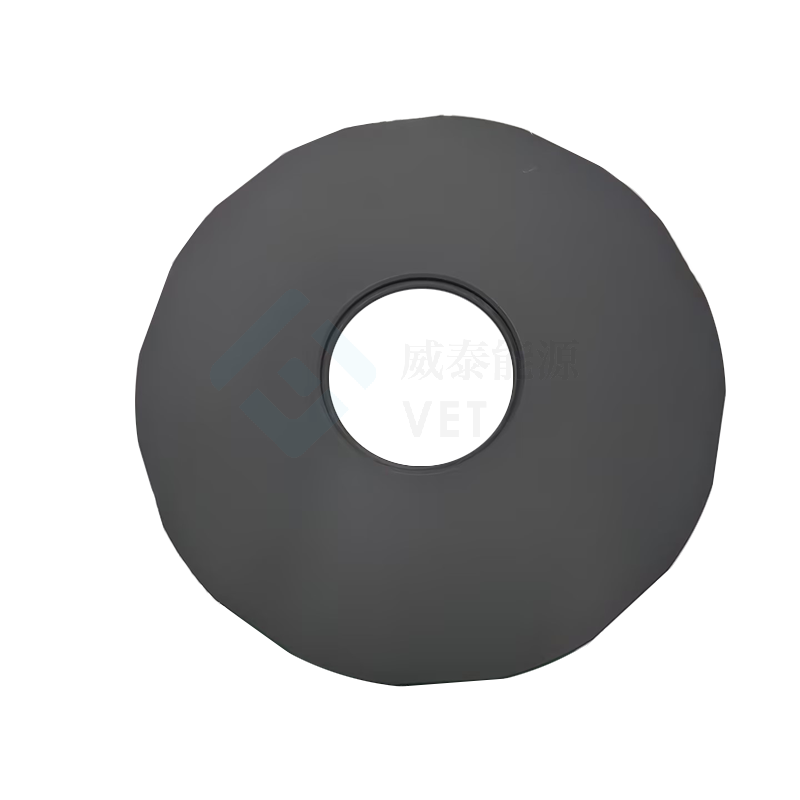コーティングのSICコードとその理由
コーティング SIC コードはコーティングの企業内の企業を分類します。 このシステムは、規制、経済、および運用目的のために業界を整理するのに役立ちます。 例えば、米国では、578社がSICコードをコーティングし、約14,058人の個人を雇用しています。 これらのコードは、コンプライアンス、市場動向の分析、および業務の合理化のために重要な役割を果たしています. SiCコーティング 適用、のような シック・コーティング、更に専門にされた製造業プロセスの関連性を強調して下さい.

要点
- コーティング分野におけるSICコードグループ事業 ルールや市場調査に役立ちます.
- SICコードは業界ルールにタスクをマッチングすることで作業を円滑にします。 彼らはまた、より良い選択肢を作るのに役立ちます.
- 企業は、オンラインでまたは専門家に尋ねることによって、適切なSICコードを得ることができます.
SICコードとは?
SICコードの歴史と目的
1937年、米国政府が経済活動をより効果的に分析できるように、標準産業分類(SIC)システムを導入しました。 業界を分類する標準化された方法を提供し、政府機関がデータを均一に収集および提示できるようにします。 この均等性は、異なるセクター間で経済データの比較性を改善しました.
1938年(昭和40年)に産業統計学のインターデパルトメンタル委員会が発足し、製造業界向けに初めて出版されました。 1939年(昭和14年)までに、非製造業を含む。 長年にわたり、SICシステムは経済分析と政策立案のための礎石になりました。 1987年(昭和27年)に、最終改定が起きました。 北アメリカの産業分類システム(NAICS)は1990年代後半にそれを交換しましたが、SICコードは特定の企業で、を含む関連しています コーティング.
SICコードの主な目的は、経済データを分析するための一貫したフレームワークを作成することです。 このフレームワークは、企業や政策立案者が業界のトレンドを理解し、情報に基づいた決定を行うことを可能にします.
SICコードが業界全体でどのように機能するか
SICコードは、企業を分類するために4桁の構造を使用します。 各数字は業界に関する特定の情報を提供します
| レベル | 説明 |
|---|---|
| 1 | 主要産業グループ(第1次2桁) |
| 2 | 業界グループ(第3桁) |
| 3 | 業界セクター(4桁) |
例えば:
- 製造業や小売業など、より幅広い業界を代表する2桁.
- 3番目の数字は、その業界内の特定のグループに絞り込みます.
- 4 桁は、正確なセクターまたはニッチを識別します.
この階層構造により、コーティングを含む各種業界を正確に分類することができます。 また、利害関係者は市場動向を分析し、特定のセクター内の機会を特定するのに役立ちます.
コーティング SIC コード

コーティング SIC コードの概要
コーティングSICコードは、コーティング業界における事業や製品を分類します。 これらのコードは、コーティングの製造、アプリケーション、または配布などの特定のセクターを識別するのに役立ちます。 また、主要な活動に基づいて企業を分類するための標準化フレームワークも提供しています。 例えば、SICコード2851は塗料、ワニス、ラッカー、エナメル、アライド製品をカバーしています。 別の例では、SICコード3479には、コーティング、彫刻、およびアライドサービスが他に分類されていないものが含まれます。 この分類システムは、業界分析とレポートの一貫性を保証します.
コーティングSIC例 コード
コーティング業界は、SICコードの広い範囲を網羅しています。 以下は、いくつかの一般的な例を強調するテーブルです
| SICの特長 コードコード | 説明 |
|---|---|
| 2851 | 塗料、ニス、ラッカー、エナメル、アライド製品 |
| 2851001 | ペイント&ペイント製品(メーカー) |
| 2851002 | ラッカー、ニス&エナメル 生産工程 |
| 2851024 | エポキシのコーティング |
| 2851030 | 木製のスタイン |
| 3479 | コーティング、刻印、およびアライドサービス、クラス分けされるElsewhere無し |
これらのコードは、海洋塗料からエポキシコーティングまで、多様な製品とサービスを表しています。 それらはまた産業使用のための木製の汚れそして保護コーティングのような専門にされた部門を含んでいます.
コーティング業界の主な用途
コーティングSICコードは、様々な産業用途において重要な役割を果たしています。 例えば、SICコード332812-04は適用を伴います 保護コーティング 腐食および摩耗を防ぐ金属表面。 同様に、SICコード332812-03は表面を損傷から保護するコーティングの作成に焦点を合わせます。 自動車、航空宇宙、建設などの産業は、適切な製品やサービスを識別するために、これらの分類に大きく依存しています。 コーティングSICコードは、防火コーティング、防水製品、熱バリアコーティングなどの特殊なソリューションの開発もサポートしています.
企業や製品を分類することで、SICコードの合理化と業界全体の意思決定を強化します.
なぜコーティングSICコードマッター
規制コンプライアンスの重要性
コーティングSICコードは、企業が規制要件を満たすのに役立ちます。 政府機関は、これらのコードを使用して、産業を監視し、環境および安全基準を遵守します。 たとえば、環境保護庁(EPA)は、有害物質を生成または使用している企業を識別するためのSICコードに依存しています。 コーティング業界における企業は、ペナルティを避けるために、これらの規則に整列する作業を確実にしなければなりません。 コーティングSICコードに基づく正確な分類は、排出量、廃棄物管理およびその他の規制義務の報告プロセスを簡素化します。 このシステムは、規制当局が業界固有のリスクを追跡し、標的ポリシーを実行するのに役立ちます.
市場分析と業界動向における役割
コーティングSICコードは、市場動向に価値のある洞察を提供します。 アナリストは、業界パフォーマンスの調査、成長機会の特定、競争の評価にこれらのコードを使用します。 例えば、SICコード2851のデータを分析し、塗料やニスの需要を把握することができます。 この情報は、企業が市場のニーズを満たすために戦略を開発するのに役立ちます。 投資家はまた、特定のセクターの収益性を評価するために、コーティングSICコードに依存しています。 企業を分類することによって、これらのコードは、業界のダイナミクスと新興トレンドの明確な理解を可能にします.
ビジネスオペレーションのメリット
コーティングSICコードは、運用効率を向上させます。 企業が主要な活動を特定し、リソースを適切に整列するのに役立ちます。 例えば、SICコード3479に分類されている企業は、コーティングと彫刻サービスに焦点を合わせることができます。 これらのコードは、同じセクター内のビジネスを接続することでネットワークを容易にします。 加えて、SICコードは、サプライヤーやパートナーを関連する専門知識で見つけるのを支援することでサプライチェーン管理をサポートします。 この合理化されたアプローチは、コーティング業界における生産性を高め、コラボレーションを促進します.
コーティング SIC コードを見つけて使用する方法
コーティングを識別するためのツールとリソース SIC コード
企業は、コーティングSICコードを識別するために、いくつかの信頼性の高いツールとデータベースにアクセスすることができます。 SICコードルックアップやNAICSコードルックアップなどのオンラインディレクトリは、包括的な検索オプションを提供します。 これらのプラットフォームは、ユーザーが業界活動に基づいて特定のコードを見つけることを可能にします。 たとえば、SICコードルックアップには、塗料、ワニス、アライド製品、およびコーティングメーカーの2851-04などのエントリーが含まれます.
その他のリソースには、塗料や塗料の製造のためのNAICSコード325510やISICコード2022などの国際分類システムが含まれています。 これらのツールは、企業がグローバルな基準で業務を整列するのに役立ちます.
| SICの特長 コードコード | 説明 |
|---|---|
| 2851 | 塗料、ニス、ラッカー、エナメル、アライド製品 |
| 28510000 | ペンキおよび味方されたプロダクト |
| 28510300 | パティ、木製のフィラー そしてシーラー |
コーティングSICコードを適用するための実用的なステップ
コーティングSICコードを適用すると、簡単な手順がいくつかあります。 第一に、企業は第一次活動を特定すべきである。 例えば、エポキシコーティングを製造する会社はSICコード2851024の下に落ちるかもしれません。 次に、正しい分類を確認するために、信頼できるディレクトリに相談する必要があります。 最後に、企業は規制のファイリング、市場分析、運用計画でこれらのコードを使用する必要があります。 適切なアプリケーションは、コンプライアンスを確保し、意思決定を強化します.
共通の課題とソリューション
一部の企業は、正しいSICコードを識別する際に課題に直面しています。 重複するカテゴリや古い情報は混乱を引き起こす可能性があります。 これに対処するには、SICコードルックアップのような更新されたデータベースを使用する必要があります。 業界の専門家や貿易協会のコンサルティングも明確に提供できます。 これらのステップは、企業が分類課題を克服し、SICコードを効果的に使用するのに役立ちます.
コーティングSICコードは、コーティング業界における事業を分類し、分析とコンプライアンスのための構造化されたフレームワークを提供します。 これらのコードは、規制遵守を強化し、市場動向評価をサポートし、運用効率を向上させます。 企業は、プロセスを合理化し、機会を特定し、情報に基づいた意思決定を行うために、コーティングSICコードを活用する必要があります。 これらのコードを活用して成長を促進し、業界のアライメントを確保します.
製品の詳細については、下記までお問い合わせください。 steven@china-vet.com またはウェブサイト: www.vet-china.com.






